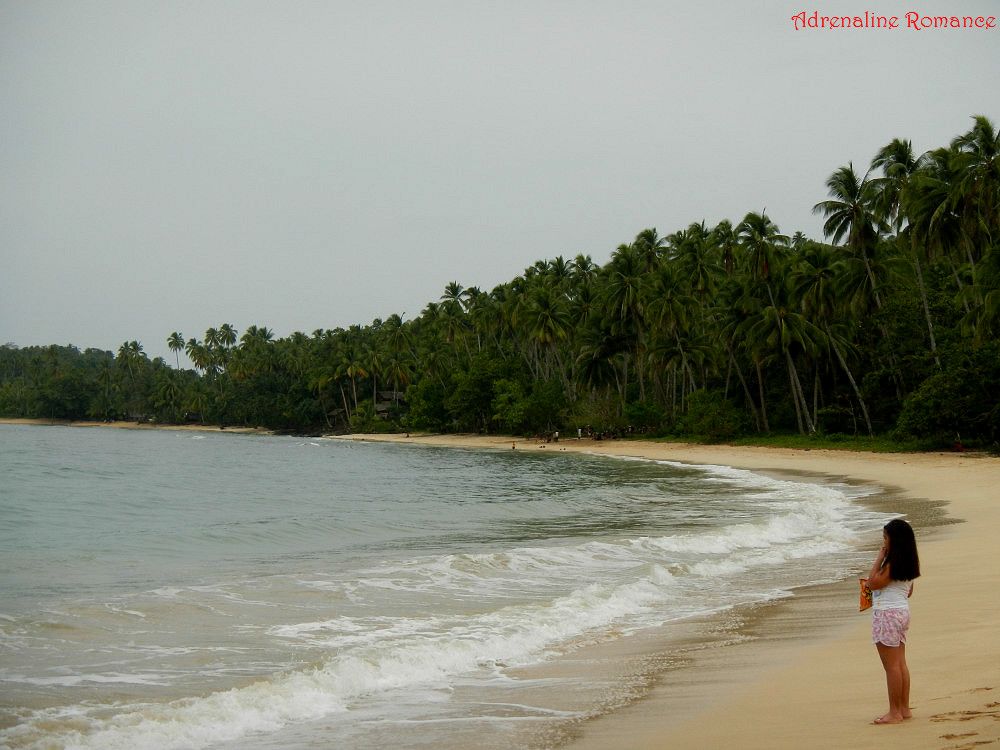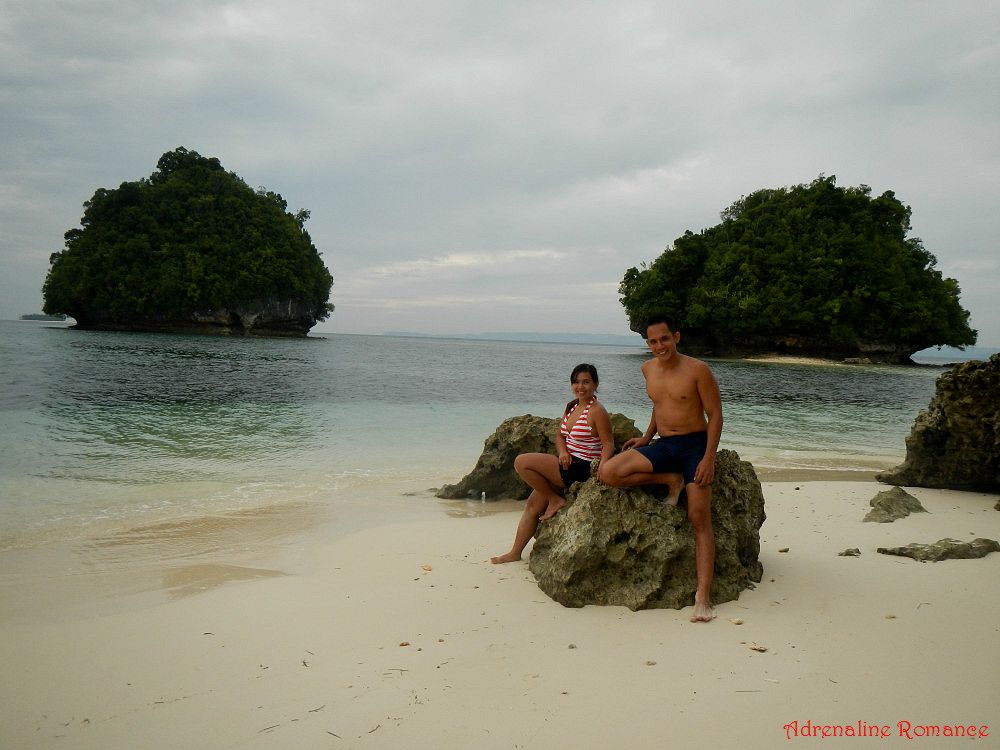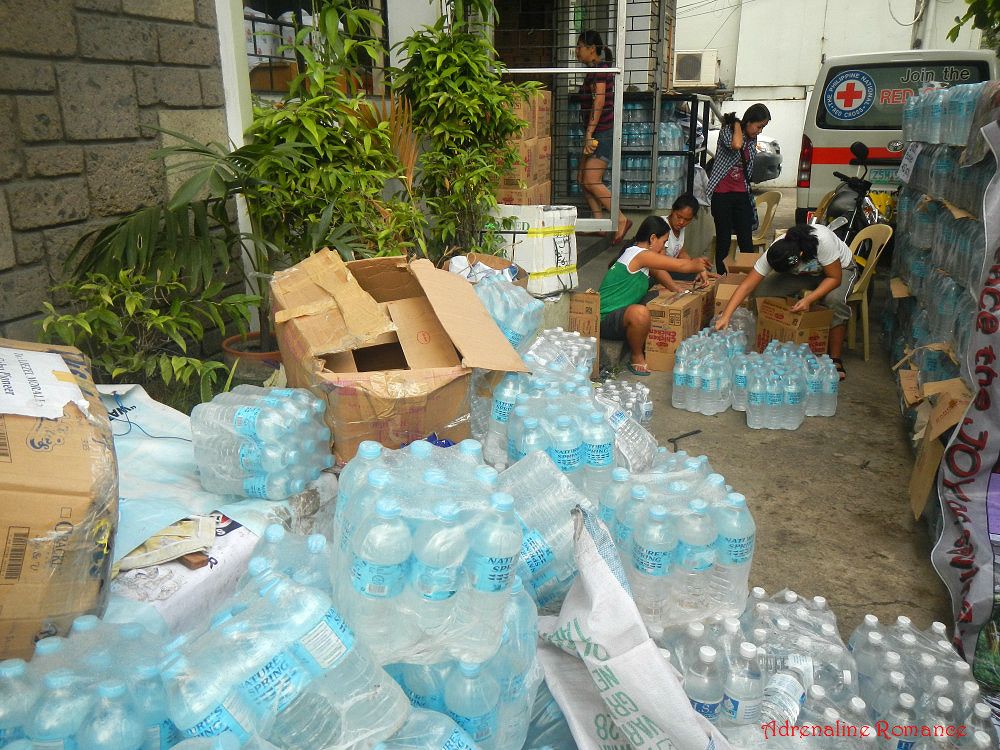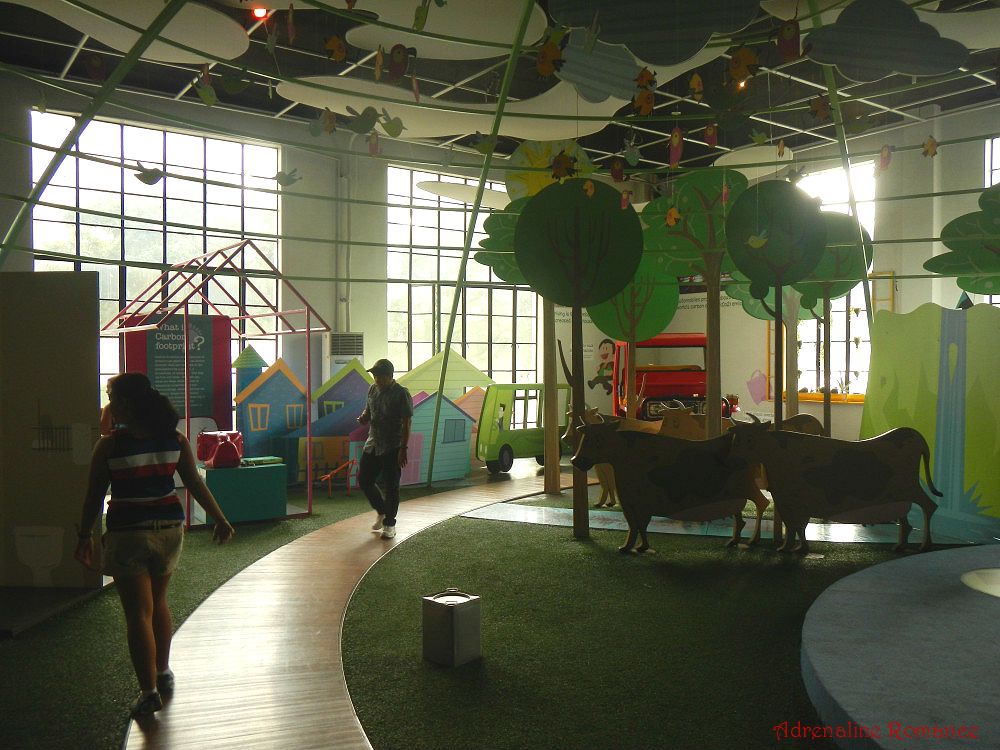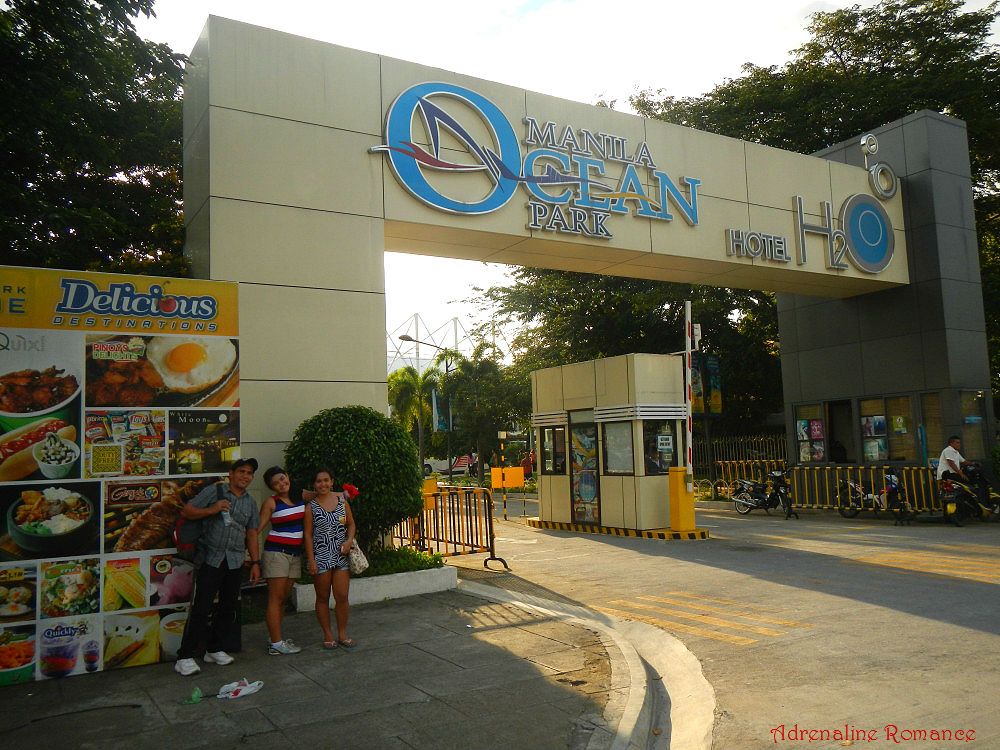
Diwata, sometimes called enkanto or dili ingon nato—the mystical and magical fairies of the Philippines—usually stay out of sight from humankind’s prying eyes. However, fortunate mortals who come to these realms may attract the attention and earn the admiration, love, and respect of these nature spirits. Sometimes, haughty humans may antagonize the spirits who will then take these mortals prisoners. Whatever the case, mortals who caught the attention or the fury of these diwatas are never seen again.
Diwatas protect, inhabit, and haunt most secluded glens and secret realms in the Philippines. Often, the beauty of one of these realms is so profound that mortals couldn’t help but weep over its splendor. Sweetie and I were fortunate to discover and visit such realm: the Enchanted River in Hinatuan, Surigao del Sur.
After enjoying the beauty of Tinuy-an Falls, we headed straight to Hinatuan where the Enchanted River is found. The two-hour motorcycle ride was so exhausting (well, we kept on sliding forward) that we had to ask Sir Johnny to stop at a junction. It turned out he was more exhausted than we were. Hehehe!

Hinatuan—and the rest of Surigao del Sur, for that matter—faces the Pacific Ocean. Thus, the area is really vulnerable to tsunamis like the one that struck Japan in 2011. The local government takes measures to put up evacuation sites such as this one where people can head to if they spot the huge wave.

After resting for 10 minutes, we proceeded on our way to Barangay Talisay in Hinatuan. And, yes, you guessed it; it was a butt-breaking, teeth-rattling bone-jarring 12-kilometer ride that took around 20 agonizing minutes.

The road leading to the Enchanted River is quite bumpy. But don’t worry, it’s all worth it. As you may have noticed, the soil is reddish in color. That’s because this area is rich in clay and iron deposits.

As our destination drew nearer, we passed by this wide gorgeous greenish river. The greenish tinge is caused by the algal growth underneath the river as well as its brackish nature.

After 20 minutes, we finally reached our destination, Hinatuan’s pride and best kept secret, Enchanted River. However, we were a little bit disheartened moments after arrival. That’s because, as you can see from the photo below, the area is being converted into a resort type of facility. And as we all know, conversions like this are usually the catalyst of something ugly, artificial, and destructive.
For nature lovers like us, this is a serious concern. Not only will these man-made structures destroy the surrounding areas but, being open to the public, it will, sooner or later, attract the wrong kind of people.

That’s the parking area across the resort. Those billboards advertise other attractions, adventures, and activities that you may want to try when visiting Surigao del Sur.

Read the sign below. It seems that a 150-meter area above the Enchanted River is at risk of collapsing. When it does, it will become a very interesting sinkhole.

Welcome to the Enchanted River! Oh, you need to pay a fee of P30 to get inside; the fee goes to the maintenance of the place. As you can see, the lush gardens around the resort are well-maintained.

The resort is filled with these cottages and tables, all available for a minimal fee. It’s a good thing though that these facilities are built several hundred yards from the river’s edge.

Families and friends who bought along raw fish or meat can use the resort’s grilling station to prepare their meals. Filipinos love to cook and eat grilled food on picnics.

This is a short, wide, trellis-covered ledge that overlooks the Enchanted River. If you do not wish to rent a table or a cottage, you can simply put your packs on the benches. Just make sure you assign someone to watch over your things. Sir Johny, our guide and driver, volunteered to look after our stuff while we enjoy the river.

We went down the ledge towards the Enchanted River itself. A section at the bottom of the ledge is fenced off, creating a small pool where little children can swim and enjoy the water safely.

A lifeguard station is positioned strategically at the riverbank. The presence of a lifeguard is quite vital here as we will explain to you later.

After 2-hours of being exposed to dust, heat, and sweat, Sweetie couldn’t resist to plunge into the cool, clear water in the Enchanted River. Check out the photo below; you can see how crystal clear the water is.

That’s the side of the river that leads to the sea. The beauty of the place is just beyond amazing! The water is so clear that you can actually see individual rocks, pebbles, and formations at the bottom. The greenish tinge comes from the fact that this is brackish water, water with less salinity than seawater but less than fresh water. Brackish water is usually found in estuaries and inlets.
Take note that the photo below is not Photoshopped or edited in any other way except for the addition of the watermark. That’s how amazing it looks.

The word “enchanted” in Enchanted River is an understatement. We couldn’t find the words to describe just how enchanting and otherworldly this place is. Indeed, it was like entering a fairy-tale world. We wouldn’t be surprised if we can see diwatas resting happily by the riverbank or if we can witness communities of elves, duwendes, and tree sprites silently observing the mortals that are setting foot on their realm. The lagoon almost seemed to be just too beautiful to be a real-world natural feature.
Again, the photo below is not Photoshopped or edited in any other way with the exception of the watermark.

Technically, the Enchanted River is not a river but a large lagoon that is fed by a tributary in the river. Sweetie and I decided to go to deeper water, towards the blue area of the lagoon to explore what is under the water.
Swimmers go down those steps to enter the lagoon as high diving is prohibited.

One of the walls lining up the lagoon features the entrances of underground caverns. For safety reasons, swimming towards and exploring these caverns is strictly prohibited.

A square hole? Perhaps the entrance to a duwende’s lair? Or a portal to the Pied Piper’s home? Or a window to a diwata’s kingdom?

Have you ever wondered why the water at the center of the Enchanted River is extremely blue? Well, let’s find out. Sweetie and I donned our goggles and took a peek under the water. What we saw was both stunning and terrifying. It was the mouth of an enormous, deep sinkhole.
If you remember your science lesson when you were in elementary school, you would know that sunlight is “divided” into different wavelengths—the colors of the rainbow, in other words. When sunlight hits the water, the water absorbs the red and reflects the blue. The deeper the hole or the farther the surface of the water is to the surface of the land underneath it, the more of the red light is filtered. That’s why the ocean—and this lagoon—is really blue.

The bottom of the hole, which is about 150 feet from the water’s surface, is the entrance to a deeper cave. According to the cave map which is prominently displayed outside the resort, much of this underwater cave system is still unexplored.

The photo below gives you a better idea of how deep this sinkhole really is. Check out the legs of the swimmers on the surface. Also, take note of the man on the foreground. Now, you can see why their lifeguards are vital here; the riverbank has a very steep slope. Just a foot away from the bank and you’re already hovering above an abyss. So if you’re a non-swimmer or if you develop cramps here, well, you know what will happen.
We began to understand the real story of people taken away by the diwatas, never to be seen again. Most probably, they drowned after taking a swim in the lagoon.

A free diver tried to reach the bottom of the cave. He only got to a quarter of the wall when he ran out of air and swam back to the surface.

Large schools of fish congregate at the mouth of the sinkhole. They got so used to people’s presence that the fish didn’t seem to be bothered by kicking legs. Mind you, these are not small fish. They average perhaps a foot long. We’re not familiar with species of fish, but I think these are the ones that sometimes end on our dinner table.

More schools of fish congregate in the lagoon. At lunchtime and around 3PM, a designated staff at the resort feeds the fish with breadcrumbs. This attracts schools of colorful and attractive fish. Although fish feeding seems “cute,” we don’t encourage the activity because it alters the natural feeding patterns of the fish.

Sweetie enjoyed floating at the lip of the abyss; and some bathers didn’t miss an opportunity to pose for a shot. Hehehe! Also, you might notice that we were wearing life jackets. That’s for safety reasons. You may be a strong swimmer, but it’s better not to take chances on swimming in water this deep without anything that you can latch on.
Life jackets can be rented at P15 per hour per person.

Can you imagine that we’re having a lot of fun above an abyss that could possibly kill us? Oh, don’t worry because, contrary to popular belief, the sinkhole doesn’t suck swimmers. The chambers under the ground are completely filled of water, and thus, there’s no vacuum that can draw in water.

After more than an hour of swimming and exploring the sinkhole, we were ready to depart. Just check out how clear the water is; you can actually see the sinkhole’s wall at this vantage point.

As we prepared to exit the resort, a local government staff approached us and asked us to fill out a survey. We strongly recommend tourism officials to ask their constituents for feedback. This is an excellent way to get reliable, firsthand data about the effectiveness of a tourism campaign, the effects of tourism on the environment, tips on improving a tourist attraction, etc.

We left the Enchanted River. After half an hour, we reached the peaceful, quiet coastal town of Hinatuan where we had lunch and waited for a bus headed for Barobo. From Barobo, we took a bus that will take us to the Little Boracay of Surigao del Sur, Cagwait Beach.

Thank you very much, Sir Johnny, for guiding and showing us the treasures of your home. Our experience in Tinuy-an Falls and Enchanted River was nothing short of magical.

Itinerary
Day 2
5:00 AM – wake up, bath, breakfast, checkout
6:00 AM – depart Casa de Babano, head to Tinuy-an Falls
6:50 AM – arrived at Tinuy-an Falls, explore waterfalls
7:45 AM – depart Tinuy-an Falls, head to Enchanted River
9:30 AM – arrival at Enchanted River, explore the lagoon, swimming
11:00 AM – depart Enchanted River, head to Hinatuan
11:30 AM – arrival at Hinatuan, lunch
12:00 PM – ride bus or v-hire to Barobo
1:15 PM – arrival at Barobo, ride a bus to Cagwait
2:50 PM – arrival at Cagwait, ride habal-habal to Cagwait Beach
3:00 PM – enjoy Cagwait Beach
3:30 PM – depart Cagwait Beach, head back to highway, wait for bus heading to Butuan
4:00 PM – ride bus heading to Butuan, get off at Salvacion
5:00 PM – arrival at Salvacion, ride a habal-habal heading to San Agustin
5:15 PM – arrival at La Entrada Resort, check in, watch sunset
7:00 PM – dinner
9:00 PM – lights off
Budget (per person)*
P 450 – (900 divided by 2 pax) Habal habal driver fee from Tinuy-an Falls to Enchanted River
P 50 – Tinuy-an Falls entrance fee
P 30 – Enchanted River entrance fee
P 15 per hour – Life Jacket rental at Enchanted River
P 40 – V-hire fare from Hinatuan Terminal to Barobo Terminal
P 80 – Bus fare from Barobo to Cagwait
P 10 – habal-habal fare from highway to Cagwait Beach
P 10 – habal-habal fare from Cagwait Beach to Highway
* Except where indicated, all rates are on a per-person basis. We did not include our expenses for meals, snacks, souvenirs, tips, and other fees in this rate sheet as you may have different needs, preferences, itineraries, miscellaneous transportation, and sharing scheme from us. Note that all figures are subject to change without prior notice.
Tips
1. Contact Sir Johnny at 0930-7337355 for your habal-habal ride. He’s a great guide and driver.
2. Note the opening/closing hours and entrance fees of Enchanted River:

3. We didn’t see any carenderias or stores in Enchanted River. This is a good thing because the absence of stores prevents the river from becoming a garbage dump. Thus, it is best to buy your meals, snacks, and beverages in Mangagoy or Bislig before going to the river.
4. The sinkhole at Enchanted River is very deep. As a precaution, rent a life jacket, even if you are a strong swimmer or a free diver. Life jackets are available for rent at the resort for P15 per person per hour.
5. Bring goggles/snorkeling masks and an underwater camera (or a digicam with a waterproof casing). The landscape under the Enchanted River is just amazing!
6. Pack light but bring the following:
- water (at least two liters)
- sandals
- umbrella, hat, or sarong
- snacks and softdrinks
- swimming attire
- goggles/snorkeling mask
- sunblock
- extra clothes
- extra money for emergencies
7. Preserve the beauty and magic of the Enchanted River by observing the adventurer’s mantra: take nothing but pictures, leave nothing but footprints, kill nothing but time.

